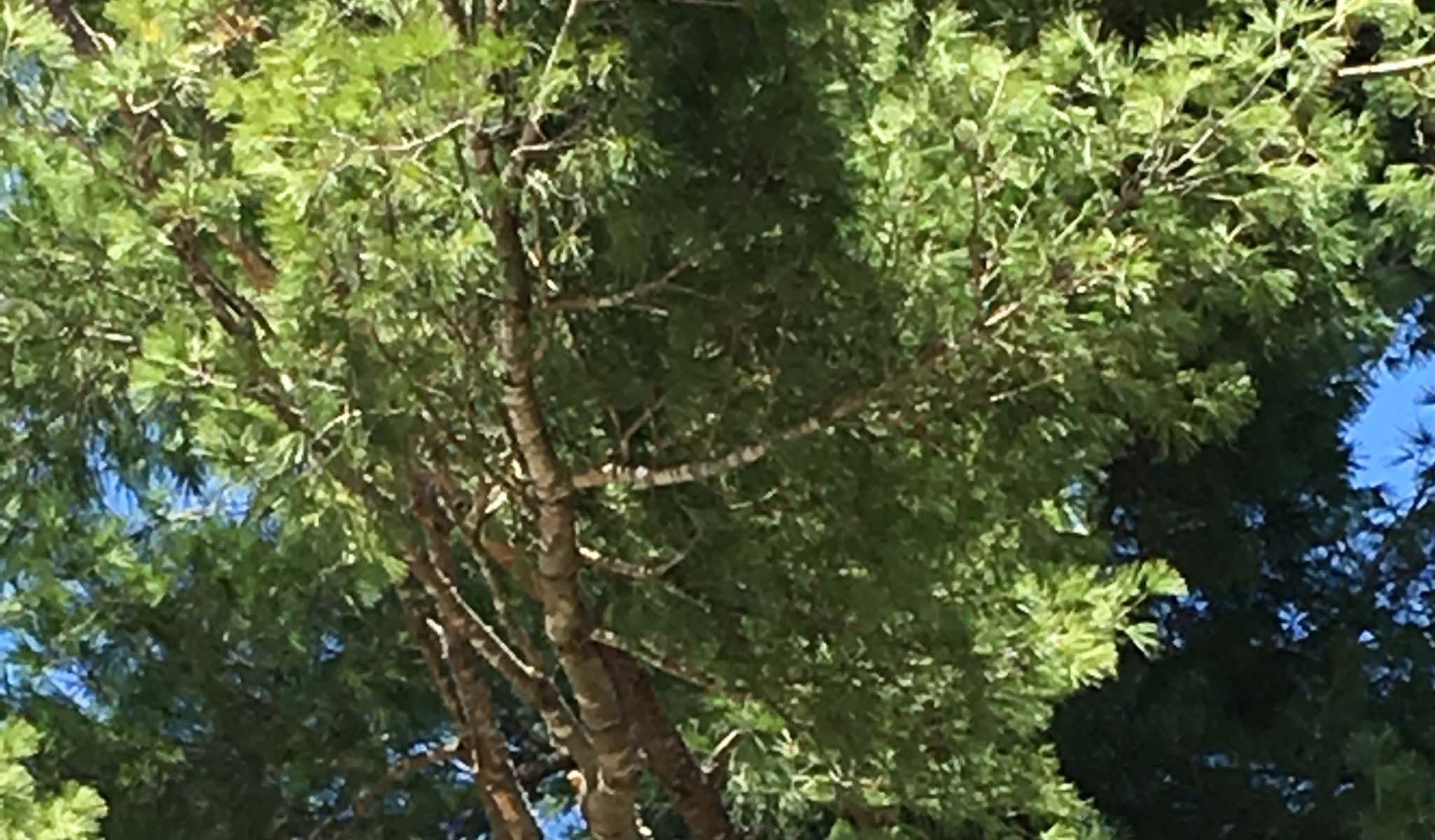Eastern White Pine

Common Name:
Eastern White PineBotanical Name:
Pinus strobusFamily:
PinaceaeZone:
3-8Height:
50-80’Spread:
20-40’Bloom Time:
April, MarchBloom Description:
Flowers are monoecious (having both male and female flowers on same plant). The male flowers are cylindrical and yellow, while the female flowers are clustered at the branch tips and are light green tinged with red.Trail/Garden Location:
Orchard TrailGarden Uses:
White pines can make attractive ornamental evergreen trees, especially in parks or lawns with large areas to accommodate their size. The attractive light-brown cones are 3-7” long, cylindrical, and curved.Wildlife Benefits:
Pine nuts are eaten by quail, turkey, chickadees, and nuthatches.Leaf Type:
Bluish-green, evergreen needles in clusters of 5 are 2-4” long. They are quite soft, with a white strip down the inner surface.Further Information:
CHAMPION TREES TRANSCRIPT
NARRATOR: Crystal Bridges is currently home to two state champion trees. Adriane Barnes and Kevin Hickey of the Arkansas Forestry Commission discuss the state’s Champion Tree Program and explain the measurements that go into determining a tree’s overall bigness index.
ADRIANE BARNES: Arkansas is a state with over 19 million forested acres, covering over 56% of the state’s acreage. The Champion Tree Program highlights the largest tree of each species amid our diverse forests. Currently 124 trees are included in our list across 41 Arkansas counties.
KEVIN HICKEY: When we get a request to come out and measure a tree to determine whether or not it’s a champion, the first thing we have to do is to determine the species and the first thing we do is to measure the circumference of the tree. We take this measurement at four and a half feet above the ground on the uphill side of the tree. Once we determine their circumference in inches, we then step away from the tree and using a special tool called a clinometer, we measure the height of the tree. A third measurement that we take is pretty much a tie breaker, and that is we measure the average spread of the branches or what we call the crown spread. We then come up with a point total, which determines the bigness index of the tree.
ADRIANE BARNES: But why does it matter what’s a champion? Well, it’s a way to get folks interested in the many ways that our forests contribute to the aesthetic beauty of our state, to the recreational beauty to our state. And just to folks that may or may not know a lot about trees. So the easiest way to send guests out on Champion Tree hunts is go and see the trees with an address listed on the currently published Champion Tree list. If a location isn’t published, get in touch with the Forestry Commission and we can easily tell you A, whether the tree is accessible or not, and B, whether it is accessible, but we encourage you to call so that you don’t get lost. The Forestry Commission Facebook page is the best place to go and find archives of photos of our champions.
